
The anatomy of a scenario...
A 𝘁𝗵𝗿𝗲𝗮𝗱 on how mitigation works, why we probably need some level of carbon capture & storage (CCS) & carbon dioxide removal (CDR) - just not as much as in scenarios.
Based on my presentation ↦ www2.slideshare.net/GlenPeters_CIC…
A 𝘁𝗵𝗿𝗲𝗮𝗱 on how mitigation works, why we probably need some level of carbon capture & storage (CCS) & carbon dioxide removal (CDR) - just not as much as in scenarios.
Based on my presentation ↦ www2.slideshare.net/GlenPeters_CIC…
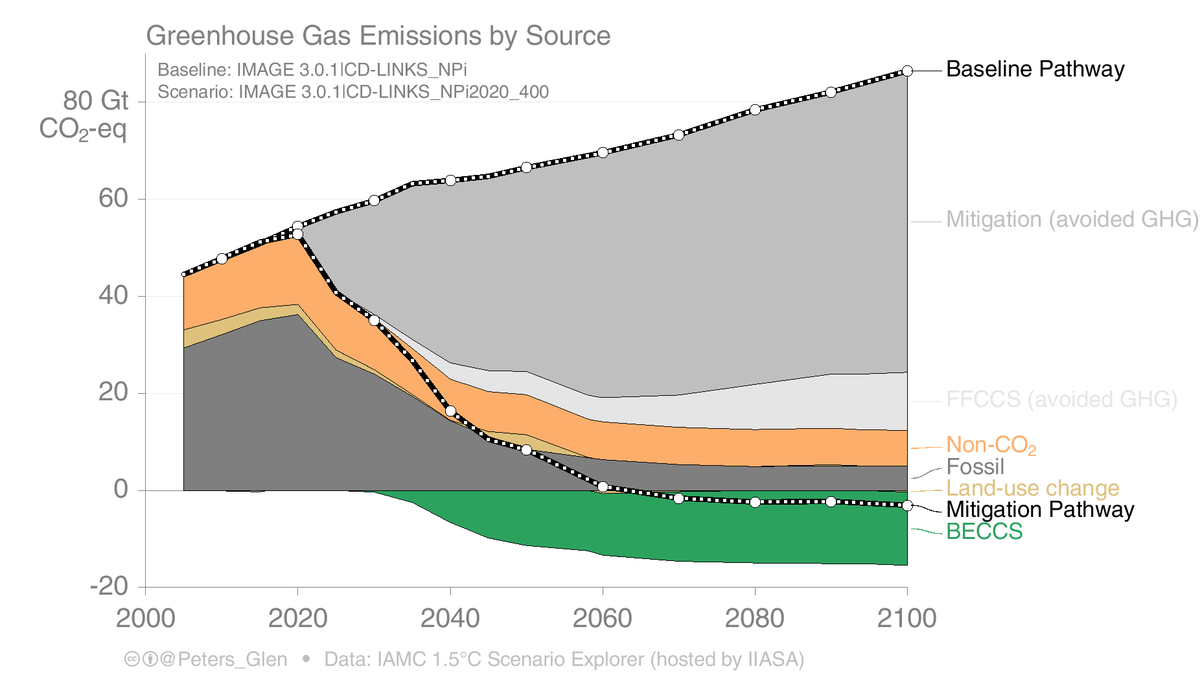
2. We start with a baseline or reference scenario, that assumes no or limited mitigation. If we want to stay "well below 2°C" we need to get rid of the dark grey & be net-zero!
We can argue about the baseline, but for the purposes here, it doesn't matter nature.com/articles/d4158…
We can argue about the baseline, but for the purposes here, it doesn't matter nature.com/articles/d4158…
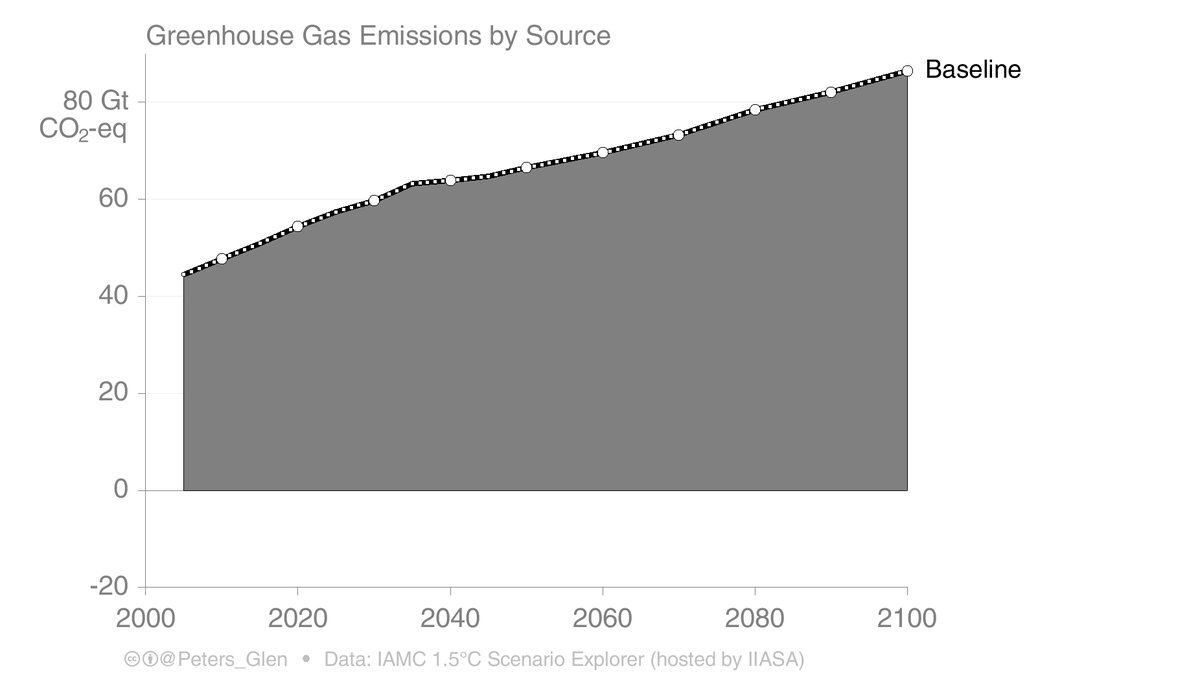
3. The heavy lifting is done by conventional mitigation: behavioural change, energy efficiency, fuel switching (fossils to non-fossils), changed transport, dematerialisation, etc, etc...
But, scenarios suggest this is not enough to get rid of all greenhouse gases.
But, scenarios suggest this is not enough to get rid of all greenhouse gases.
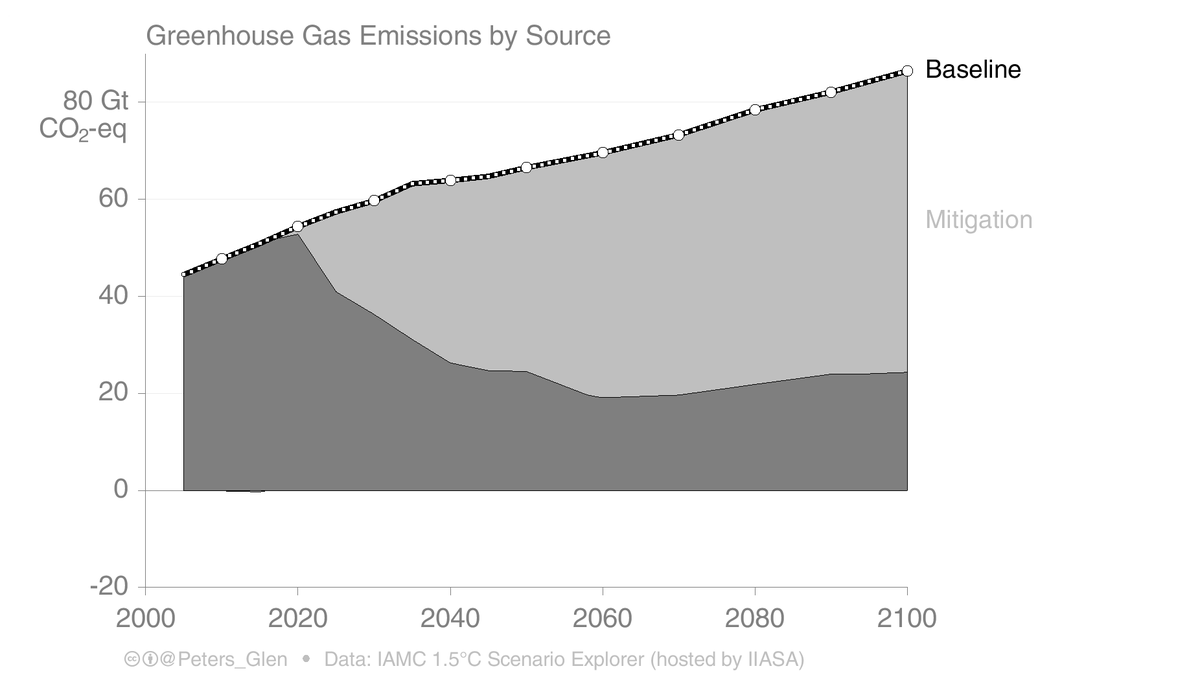
4. In some sectors, particularly some industrial sectors, perhaps the cheapest or only way to mitigate is with carbon capture & storage (CCS), eg, cement, steel, chemicals, etc
This is one reason we need CCS...
This is one reason we need CCS...
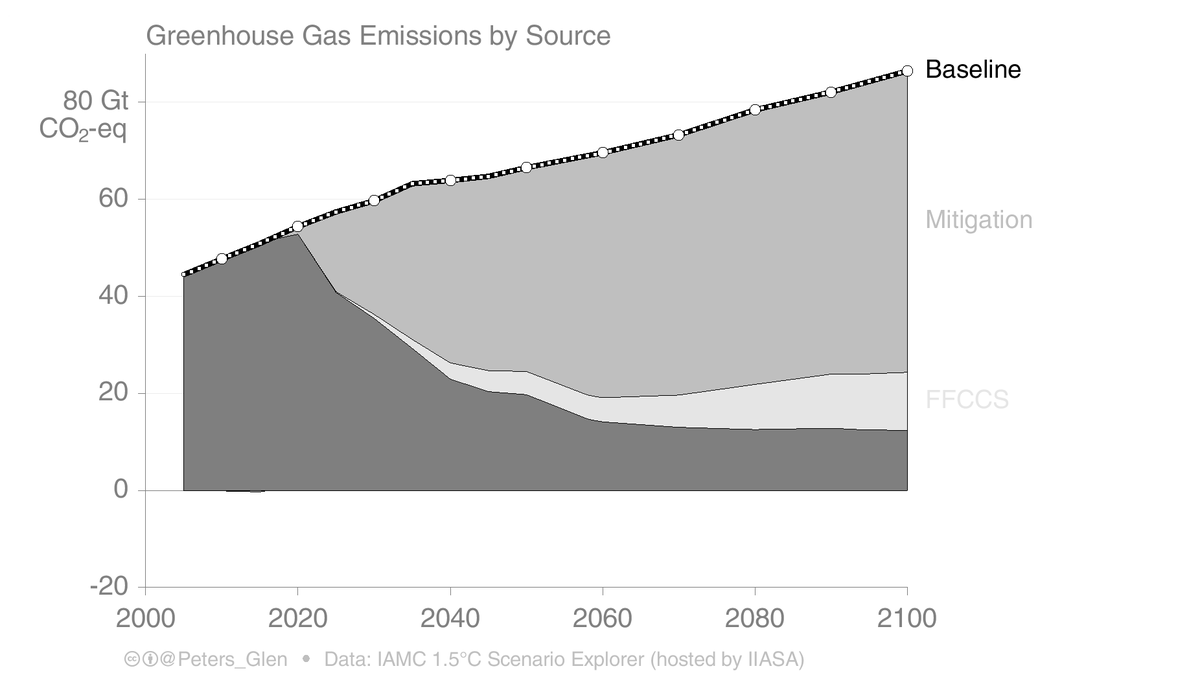
5. We can't forget about non-CO₂ emissions. We can probably get most non-CO₂ out of industry, but what about agriculture? Even if we change diet, reduce food waste, etc, we may not be able to eliminate CH₄ or N₂O from agriculture.
Some CO₂ & non-CO₂ remains (dark grey)...
Some CO₂ & non-CO₂ remains (dark grey)...
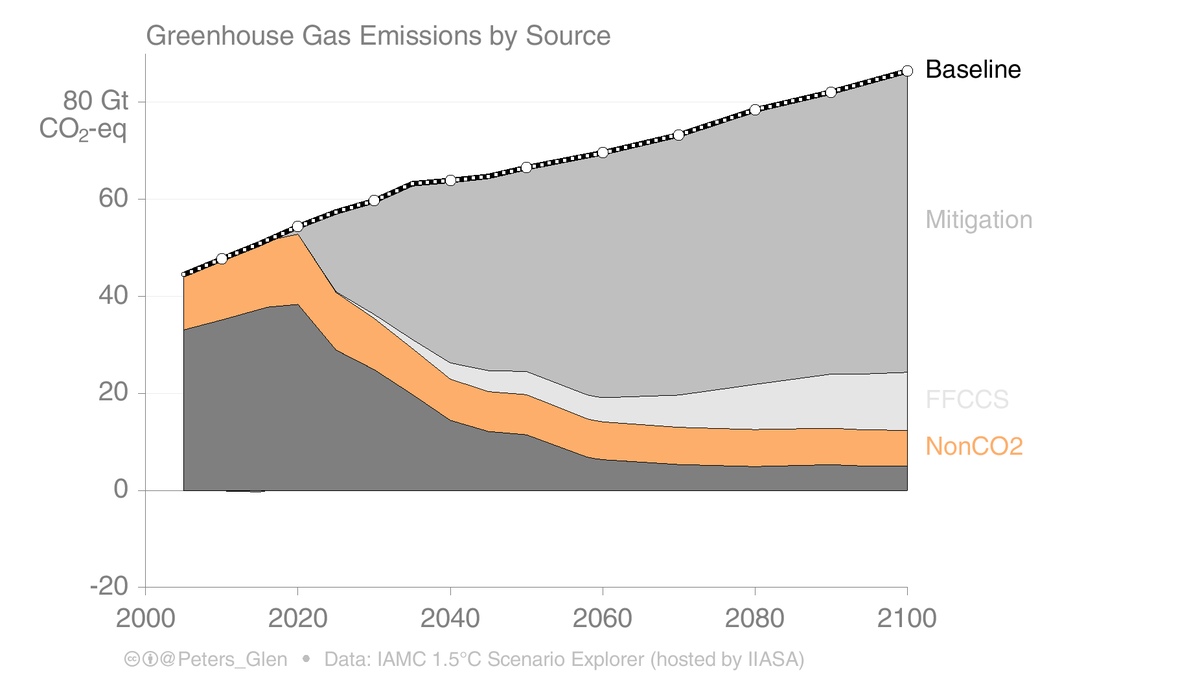
6. Since we can't get rid of all CO₂ & non-CO₂, we need some carbon dioxide removal (CDR), shown as bioenergy with carbon capture & storage (BECCS).
This is how mitigation works in an IAM: we need lots of conventional mitigation with CCS & CDR to clean up the remaining mess.
This is how mitigation works in an IAM: we need lots of conventional mitigation with CCS & CDR to clean up the remaining mess.

7. When we show scenarios, we often miss the large slice that has come from standard mitigation. Most of the standard mitigation we already know how to do...
This scenario goes below zero & will have temperature overshoot, but I am not going down that rabbit hole today!
This scenario goes below zero & will have temperature overshoot, but I am not going down that rabbit hole today!

8. CCS fits into scenarios in two ways:
1. Avoid emissions in the continued use of fossil fuels
2. As an element of some types of CDR (BECCS & DACCS) - other forms of CDR don't need CCS
There is a lot of confusion between CCS & CDR, & some like using CCUS (not a fan myself)
1. Avoid emissions in the continued use of fossil fuels
2. As an element of some types of CDR (BECCS & DACCS) - other forms of CDR don't need CCS
There is a lot of confusion between CCS & CDR, & some like using CCUS (not a fan myself)

9. I have just shown one scenario, but there are lots of pathways to 1.5°C. They all have similar characteristics, but they also differ in details.
It may be possible to get to 1.5°C with more or less CCS & CDR...
It may be possible to get to 1.5°C with more or less CCS & CDR...
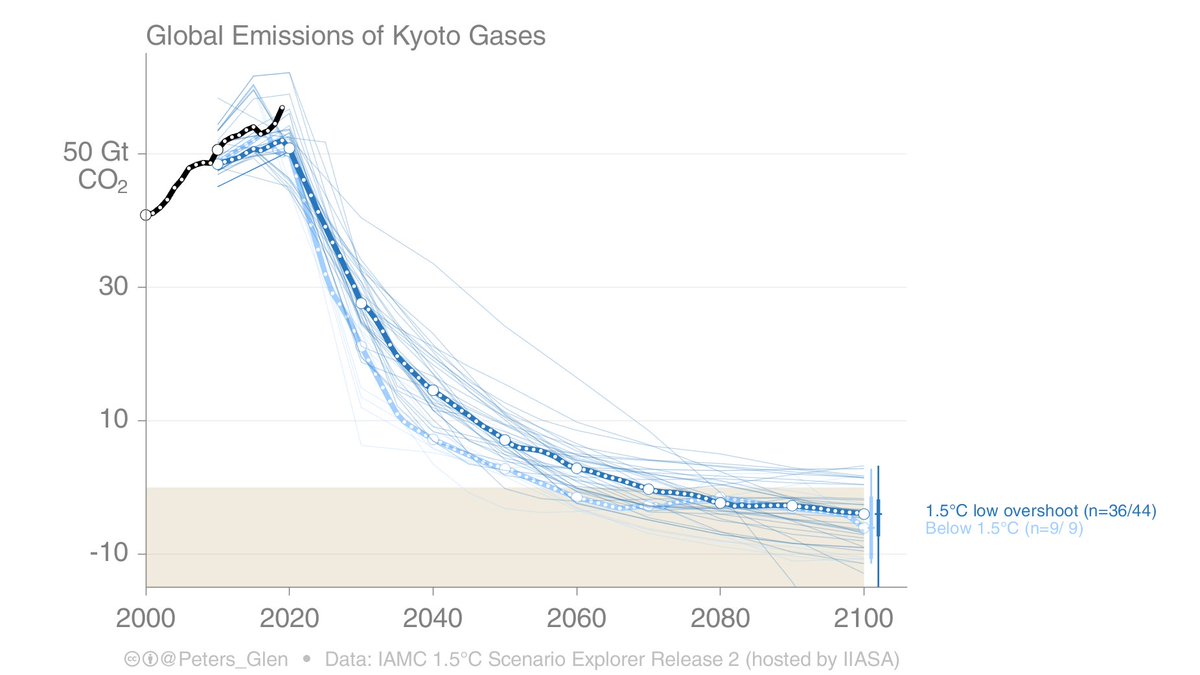
10. Unfortunately, most scenarios use loads of CCS (a lot of which is BECCS). The scales are big...
If you assume an average CCS facility is 1MtCO₂/yr, that is on average ~10,000 facilities by 2050. In the 2040s, growth is 1GtCO₂/yr or a new ~3MtCO₂ facility every day!
If you assume an average CCS facility is 1MtCO₂/yr, that is on average ~10,000 facilities by 2050. In the 2040s, growth is 1GtCO₂/yr or a new ~3MtCO₂ facility every day!
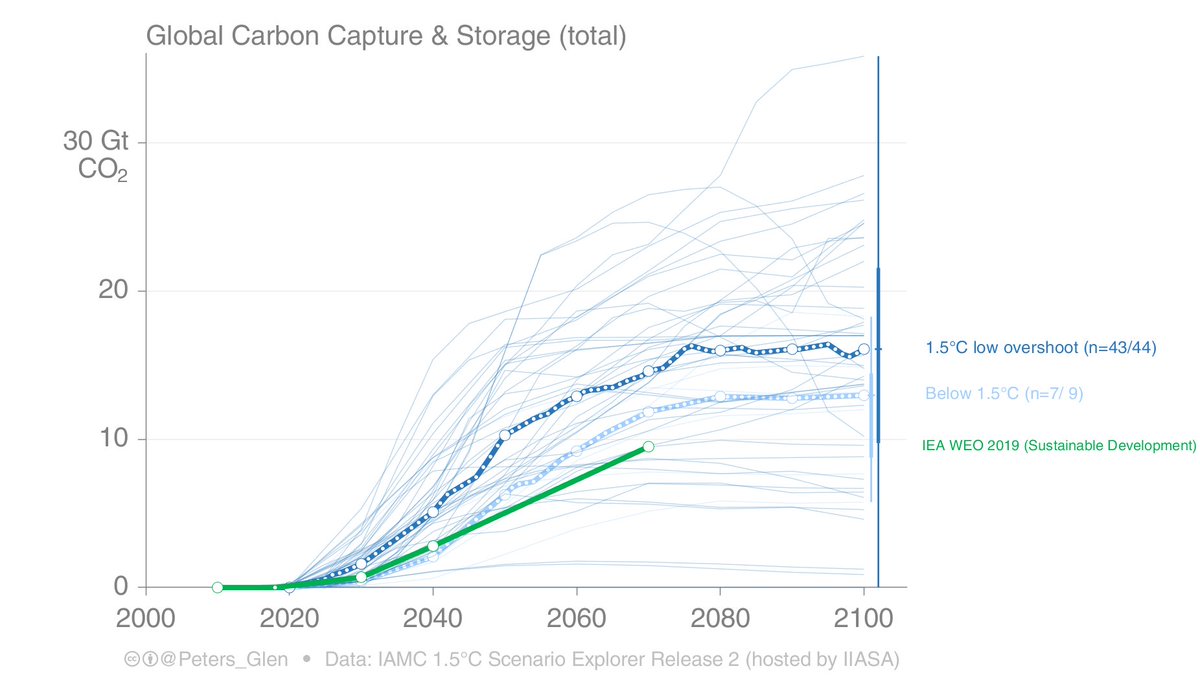
11. I would argue this level of CCS on these time scales is not feasible, but IAMs disagree with this point (my view is the outlier view).
But, that does not meant we don't needs CCS. Back to fundamentals:
* Hard-to-mitigate industry
* Offset agricultural emissions
* Overshoot
But, that does not meant we don't needs CCS. Back to fundamentals:
* Hard-to-mitigate industry
* Offset agricultural emissions
* Overshoot
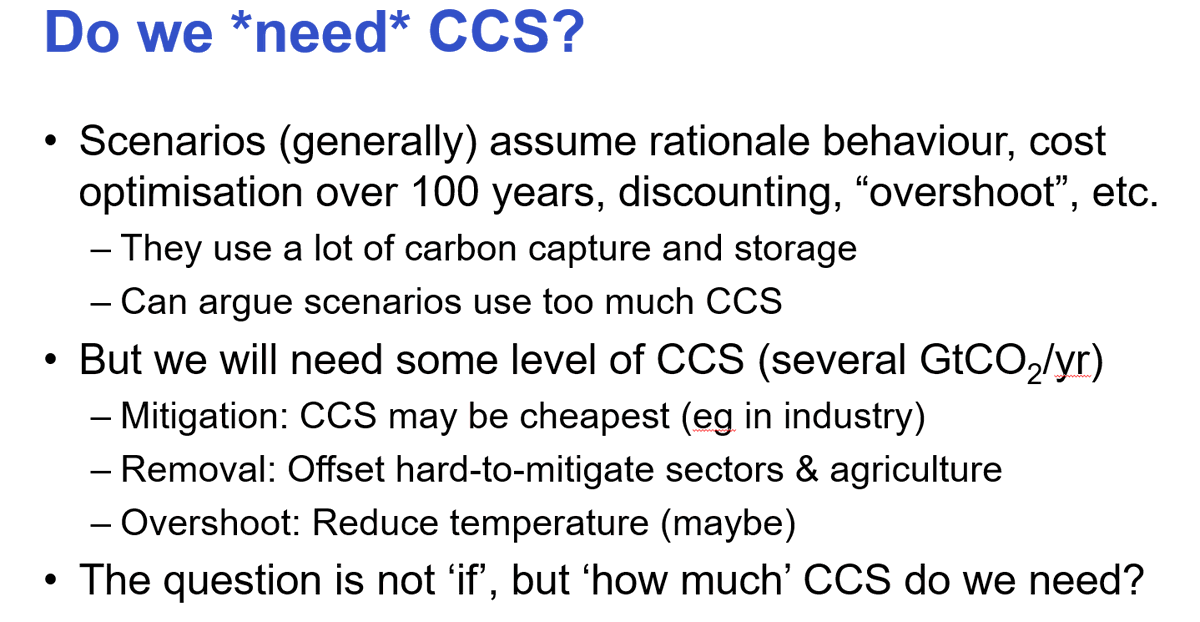
12. Together with my colleague @idasogn, we wrote a post on why CCS may be necessary, even if the level in scenarios seems excesssive.
cicero.oslo.no/no/posts/nyhet…
cicero.oslo.no/no/posts/nyhet…
13. It is not a question of 𝐢𝐟 we need CCS, but a question of 𝐡𝐨𝐰 𝐦𝐮𝐜𝐡...
But, don't forget, the heavy lifting is done by conventional mitigation...
You can check my presentation here www2.slideshare.net/GlenPeters_CIC…
/end
But, don't forget, the heavy lifting is done by conventional mitigation...
You can check my presentation here www2.slideshare.net/GlenPeters_CIC…
/end

And here is the presentation
• • •
Missing some Tweet in this thread? You can try to
force a refresh








